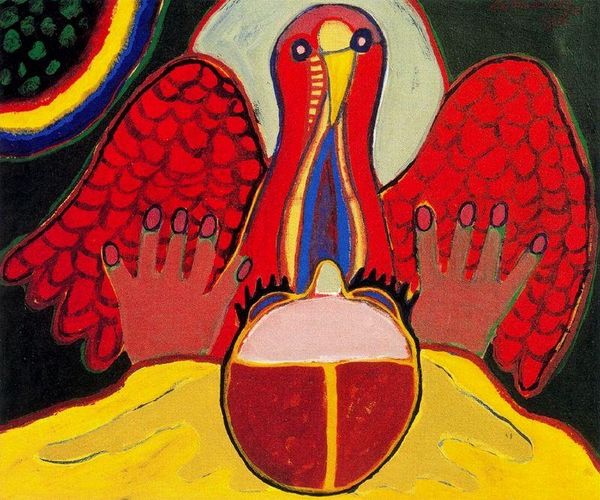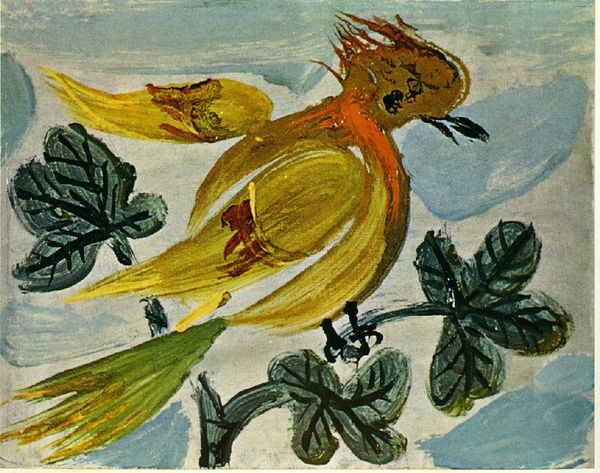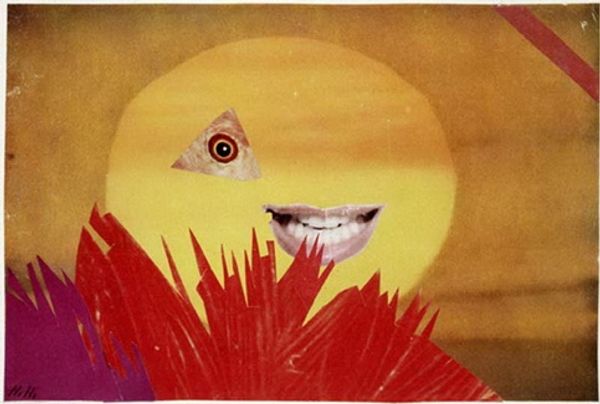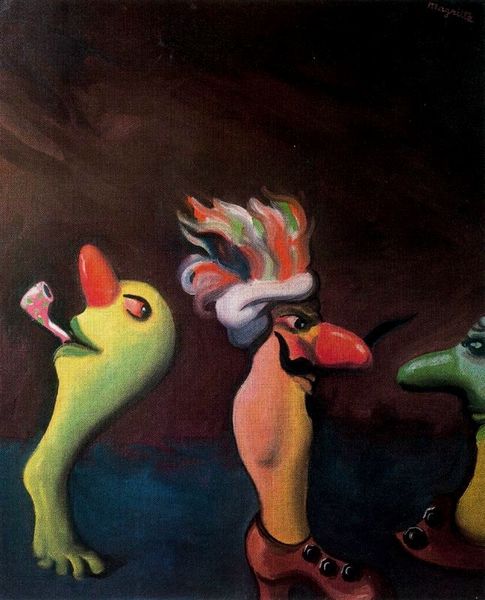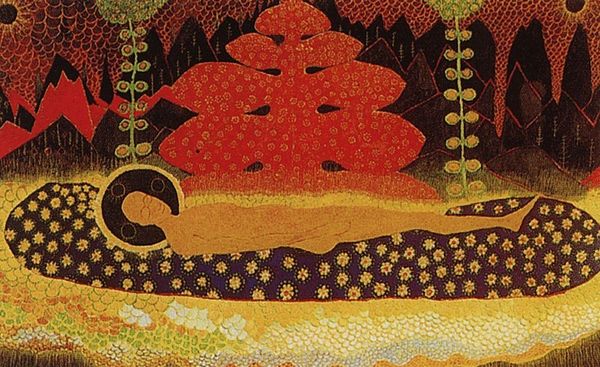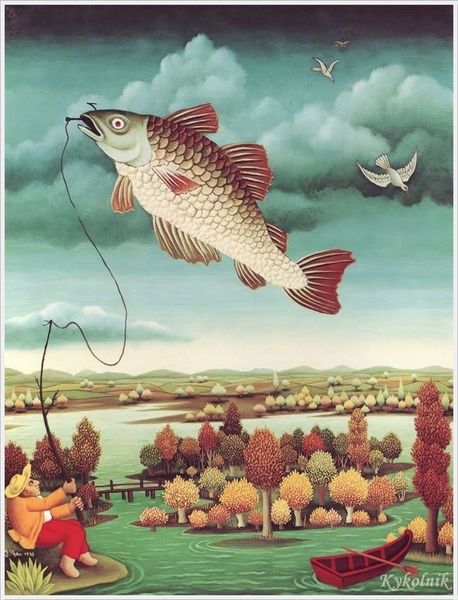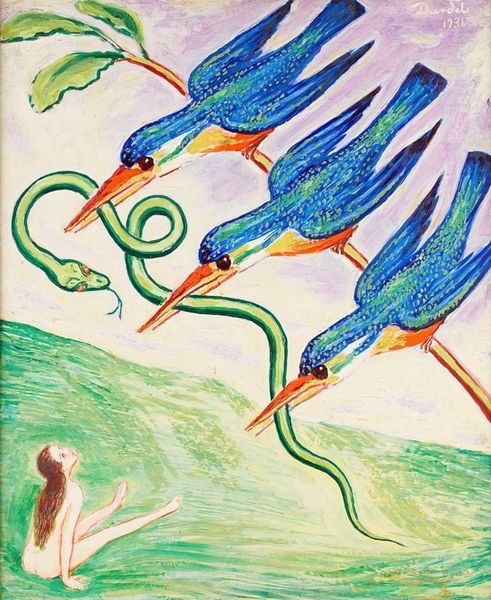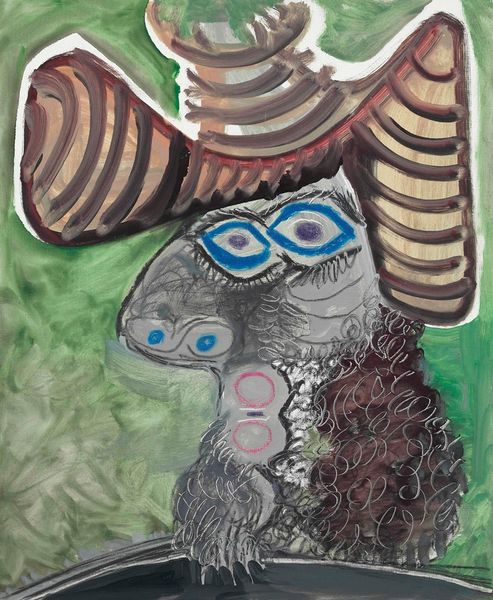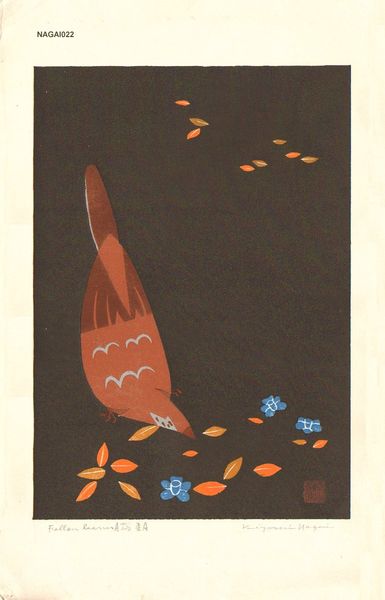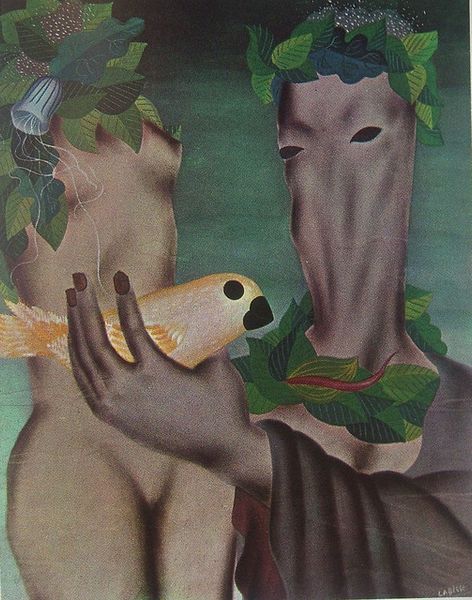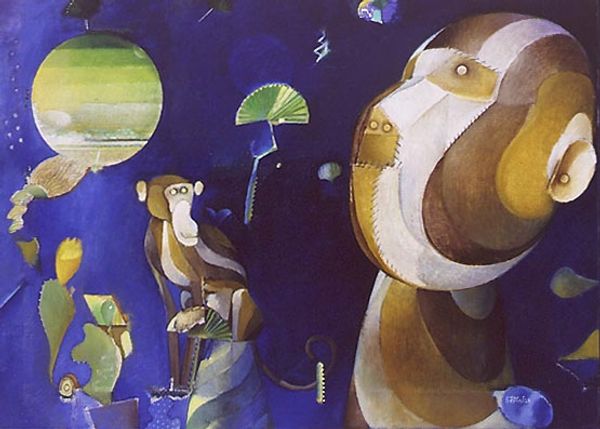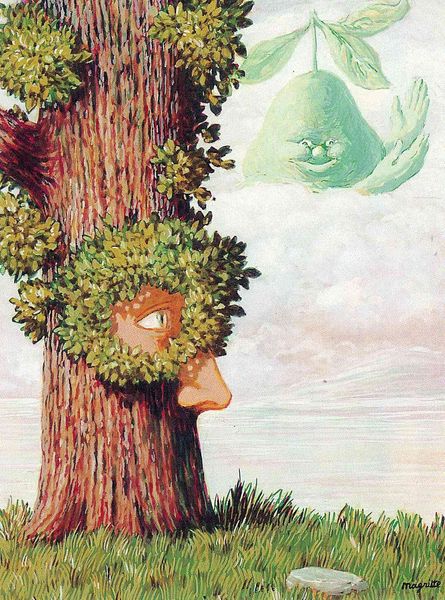
painting, oil-paint
#
portrait
#
abstract painting
#
painting
#
oil-paint
#
landscape
#
figuration
#
naive art
#
surrealism
Copyright: Grace Pailthorpe,Fair Use
Curator: Grace Pailthorpe's "November 14, 1937," executed in oil paint, presents us with a fascinating and, frankly, rather unusual image. Editor: Unusual is an understatement! My first thought is... dreamlike. Like something I'd see if I fell asleep reading a book of fairy tales and psychology at the same time. It’s got that surreal, slightly unsettling vibe. Curator: Pailthorpe was deeply involved with surrealism, especially its connection to psychoanalysis, along with her partner Reuben Mednikoff. They used art as a way to explore the unconscious mind, aligning themselves with the surrealist pursuit of expressing psychological truth. The specific date as title might indicate some kind of experiment. Editor: An experiment in pure weirdness, maybe! Seriously, look at this creature – this sun-faced, vegetal… thing. It's spitting out a rouge mouth! And the way it seems to almost cradle the pines… very unnerving maternal feelings. There's such a strange mix of gentleness and… violation. Curator: These figures, seemingly nonsensical, might have roots in psychoanalytic theory. Pailthorpe and Mednikoff embraced automatism as a path to the unconscious. Editor: It almost feels like a Rorschach test that keeps changing depending on your mood. But also, you have to admit, the naive and childlike forms offer a sort of vulnerability. Even this 'thing' almost earns empathy. Curator: Perhaps reflecting the vulnerability exposed through psychoanalysis? We could see this through a historical lens, understanding Pailthorpe's artwork as both a product of and commentary on the growing field of psychology and the anxieties of her era. Also to the interwar political turmoil. Editor: Maybe. Or maybe it's just a wild and wonderful trip inside Pailthorpe's mind, reminding us that the most compelling art comes from confronting our internal chaos. Either way, it’s got staying power; it stays with you. Curator: I would certainly agree on its lasting impression. Hopefully, by considering its historical context, we gain greater insight to better understand the artwork itself and to appreciate the circumstances of its production.
Comments
No comments
Be the first to comment and join the conversation on the ultimate creative platform.
